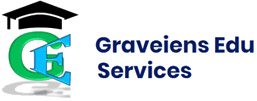Are you from a publishing house in India looking to create top-notch textbooks that connect with students and educators alike? We all know that textbooks are not just mere bundles of information. They are much beyond that. They are the tools that shape young minds and make way for future success. As a publisher, you can influence what students learn and how they learn it. Crafting textbooks isn’t just about slapping together some words and pictures – it’s an art, a science, and a whole lot more. Let’s walk through the five essential rules of textbook development that will elevate your publication house to new heights.
1. Relevance with Curriculum
Well, first things first. Keeping up with the curriculum is one of the top things you must remember. Make sure that the content aligns with the syllabus prescribed by educational boards. Keep abreast of the latest trends in teaching methodologies to ensure that your textbooks remain relevant and up-to-date. Additionally, consider incorporating interactive elements such as quizzes, activities, and multimedia resources to enhance engagement and comprehension.
2. Understanding Your Audience
Knowing your audience inside out is another important factor that decides how well the book is accepted. Who are the students that will be using your textbooks? What are their learning preferences, needs, and challenges? Based on thorough research and feedback from educators and students, the content should be crafted. Your content should meet the specific requirements. Remember, textbooks are not one-size-fits-all – customization is key to success.
3. Clarity and Accessibility
Textbooks should be easy to understand and navigate, especially for students who may be encountering the material for the first time. Use clear language and concise explanations. Visual aids such as diagrams, charts, and illustrations can convey complex concepts effectively. Organize your content logically, with headings, subheadings, and summaries to help students grasp the main ideas quickly. Note that accessibility is the key. Ensure that your textbook content is inclusive and accommodates diverse learning styles and abilities.

4. Creativity and Critical Thinking
Gone are the days of rote memorization – today’s textbooks should encourage critical thinking, problem-solving skills, and creativity. Motivate students to think critically about the material, ask questions, and draw connections between different concepts. Incorporate real-world examples, case studies, and hands-on activities to stimulate curiosity and inspire creativity. By nurturing these essential skills, you’ll empower students to become lifelong learners and independent thinkers.
5. Continuous Improvement and Feedback
Textbook development is an ongoing process. Therefore, seeking feedback from educators, students, and subject matter experts at every journey stage is crucial. Regularly evaluate your textbooks for effectiveness, relevance, and engagement. Be willing to make revisions and updates as needed. Embrace technology and digital tools to gather feedback efficiently and adapt your content in real time. Remember, the goal is not just to publish textbooks but to create learning resources that make a meaningful impact on students’ lives.
Conclusion:
Thus, to conclude, textbook development involves the proper amalgamation of science and art. It requires careful planning, creativity, and a deep understanding of the educational landscape. Properly studying the educational curriculum is very important, as the proper analysis of it will give us a clear picture of the current demand.
By following these five rules- understanding your audience, embracing curriculum relevance, prioritizing clarity and accessibility, fostering critical thinking and creativity, and continuously seeking feedback –, you’ll be well on your way to creating textbooks that set the standard for excellence in the publishing industry.
So follow these five rules, and stay tuned for further informative updates on our website. Also, visit us now for superior-quality academic content development services for high schools and colleges.

FAQs
Why is understanding your audience important in textbook development?
Understanding your audience helps us customize the content to meet the specific needs and learning preferences. This would ensure maximum engagement and comprehension among both educators and students
Mention some ways to make text books more accessible.
Below are some ways to make textbooks more accessible
- Usage of clear language
- Concise explanations
- Visual aids to enhance comprehension
Besides these organize content logically with headings and summaries. Incorporate interactive elements to fit diverse learning styles and abilities.
Continuous improvement and feedback are important in textbook development. Explain why?
Textbook development is an ongoing process. Feedback from educators, students, and experts helps identify areas for improvement. Thus, it ensures that textbooks remain relevant to the updated demands and also engaging enough.



Comments 0